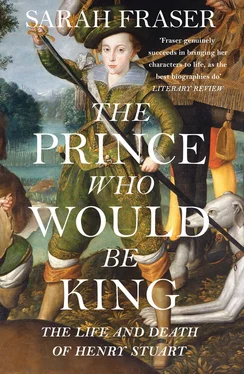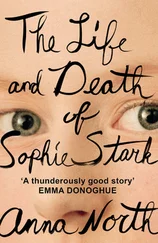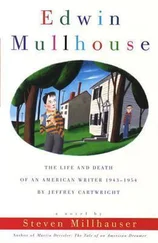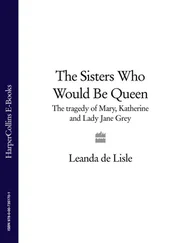Sarah Fraser - The Prince Who Would Be King - The Life and Death of Henry Stuart
Здесь есть возможность читать онлайн «Sarah Fraser - The Prince Who Would Be King - The Life and Death of Henry Stuart» — ознакомительный отрывок электронной книги совершенно бесплатно, а после прочтения отрывка купить полную версию. В некоторых случаях можно слушать аудио, скачать через торрент в формате fb2 и присутствует краткое содержание. Жанр: unrecognised, на английском языке. Описание произведения, (предисловие) а так же отзывы посетителей доступны на портале библиотеки ЛибКат.
- Название:The Prince Who Would Be King: The Life and Death of Henry Stuart
- Автор:
- Жанр:
- Год:неизвестен
- ISBN:нет данных
- Рейтинг книги:3 / 5. Голосов: 1
-
Избранное:Добавить в избранное
- Отзывы:
-
Ваша оценка:
- 60
- 1
- 2
- 3
- 4
- 5
The Prince Who Would Be King: The Life and Death of Henry Stuart: краткое содержание, описание и аннотация
Предлагаем к чтению аннотацию, описание, краткое содержание или предисловие (зависит от того, что написал сам автор книги «The Prince Who Would Be King: The Life and Death of Henry Stuart»). Если вы не нашли необходимую информацию о книге — напишите в комментариях, мы постараемся отыскать её.
NOW THE SUBJECT OF BBC2 DOCUMENTARY The Best King We Never Had
The Prince Who Would Be King: The Life and Death of Henry Stuart — читать онлайн ознакомительный отрывок
Ниже представлен текст книги, разбитый по страницам. Система сохранения места последней прочитанной страницы, позволяет с удобством читать онлайн бесплатно книгу «The Prince Who Would Be King: The Life and Death of Henry Stuart», без необходимости каждый раз заново искать на чём Вы остановились. Поставьте закладку, и сможете в любой момент перейти на страницу, на которой закончили чтение.
Интервал:
Закладка:
Anne grew up a royal princess of one of the largest Protestant political entities in Europe. Her grandfather, Christian III, converted Denmark to Lutheranism in 1536, but Denmark declined to adopt the ‘purer’ form of Protestantism – the Calvinism that Scotland came to profess under John Knox. Anne’s former suitor, Prince Maurice of Nassau, withdrew his offer on hearing that she would not convert to Calvinism in order to marry him.
Denmark’s location gave it control of the sea lanes connecting the Atlantic to the Baltic. The tolls it charged shipping to pass through the Danish Sound and trade with the Hanseatic ports, made its monarchy wealthy. When Christian IV finished modernising it, Denmark boasted ‘the largest and most efficient naval force in northern Europe’. His new nephew, Prince Henry, would grow up to cherish an equal passion for his navy.
The Danes spent as befitted Renaissance Protestant princes. Their riches and power financed cultural activity that put them at the forefront of the Renaissance. Christian’s huge architectural projects changed the face of Copenhagen, making it one of the loveliest cities in Europe. Anne and Christian’s mother, Sophie of Mecklenburg, maintained Tycho Brahe, the first astronomer in Europe to win international fame. Scholars flocked from across the Continent to meet him. Visitors to Brahe’s island home included James VI when he came to collect Anne, his betrothed, in October 1589. James passed with amazement and delight through rooms full of books, maps and spheres to help man uncover the laws of nature by which God moved the heavens. Laboratories bubbled and steamed with alchemical scientific experiments. Brahe set on his own printing press his groundbreaking book on astronomy, the foundation text for Kepler and Galileo.
Buildings and gardens, statuary and art works, developments in all branches of science, new political theory and historical awareness, were all part of that international lingua franca of the Renaissance. It was a language Anne grew up speaking as a native and passed on to all her children. Anne of Denmark was, in every way, a brilliant match for James VI of Scotland. A princess raised in this milieu; a woman who was bilingual in Danish and German; who had enough French to be able to write and converse with her new husband (who had no German); who then quickly learned Scots to a high level of idiomatic ease; who enjoyed and patronised a broad range of cultural activity, was unlikely to be the empty-headed fool of hard-line Calvinist censure.
In addition, the Scottish court soon discovered their queen possessed a strong will. Shortly after she arrived in Scotland in 1590, Anne dismissed James’s most important female attendant from her service, sixty-five-year-old Lady Annabella Murray, Dowager Countess of Mar. The king’s love and respect for ‘Lady Minnie’ ran deep. The Mars were hereditary keepers of Stirling Castle and, by tradition, the guardians of Scottish monarchs. King James had been fostered out to them when he was an infant and Lady Minnie was the only mother he knew. The king grew up with her son, Master John Erskine, whom he nicknamed Jocky o’ Sclaittis (Slates), in fond recollection of schooldays spent together.
Anne, though, discovered Lady Minnie gossiping with her friend, the wife of the Scottish chancellor: the devout old dowager regretted too loud that James had not married the more suitable Catherine, sister of French Huguenot leader, Henri of Navarre. Out both women went. In their place Queen Anne brought in her Danish friends and lively young Scots women, including the Ruthven sisters, Beatrix and Barbara, and Henrietta Stuart, Countess of Huntly. Henrietta was the Catholic wife of a Catholic earl – pure gall for the godly who believed the queen’s court was being peopled with the weak and the wicked: Lutherans and papists.
Four years later, in February 1594, Anne understood very clearly the huge political and dynastic significance of her son’s arrival. From the birthing chamber, a lady-in-waiting carried the baby to its royal nursery within the Prince’s Tower. They swaddled him and he latched onto the dugs of Margaret Mastertoun, his mistress nurse. When he gurned, Mistress Mastertoun handed Henry to one of his four rockers.
Good medical practice prescribed swaddling to keep Henry’s limbs straight, prevent rickets, and ensure strong growth. A few months later, liberated from the torment of swaddling bands, Henry started to stretch and move, but not crawl. Crawling suggested a prince too close to his animal nature, with its connotation of original and other sins. God condemned the serpent to crawl on his belly and eat dust all his days – not the crown prince. As soon as the infant could hold himself upright, Henry’s nursery maids strapped him into a wheeled and velvet-lined baby walker.
To keep him alive, four medical practitioners attended in rotation: Dr Martin, Gilbert Primrose the surgeon, Dr Gilbert Moncrieff, and Alexander Barclay, Henry’s apothecary. Infant mortality in the under twos ran at up to fifty per cent, giving a royal mother good reason to stay close and supervise. Queen Anne meant to preside over her son’s nursery, to oversee his infant japes and woes. By birth and upbringing a political animal, Anne also wanted to instil in Henry her religious, political and cultural values, not an enemy’s; and enemies, in the queen’s view, lived too close to her boy.
Anne had been horrified when James commanded her to leave her own palace and go to the Mar stronghold at Stirling to give birth. As soon as it was clear that the baby would live, the king followed Scottish royal custom. Within forty-eight hours of his safe delivery, Prince Henry was fostered out to the Earl of Mar and that ‘venerable and noble matron’ Lady Minnie. The king formally contracted Mar not to deliver the prince ‘out of your hands except [if] I command you with my own mouth, and being in such company as I myself shall like best of.
‘In case God call me at any time,’ James said, ‘that neither for the Queen nor Estates [Parliament’s] pleasure ye deliver him till he be eighteen years of age and that he command you himself.’ Henry would live out his entire infancy, childhood and youth at Stirling Castle. Anne would have to accept she would never govern Henry’s household. Her son would be raised by the high-born women of the Mar faction – the ladies Morton, Dunhope, Clackmannan, Abercairney, and the widow of Justice Clerk Cambuskynneth – and his male officers, James Ogilvie, Marshall and David Lennox, who served and ate at the ladies’ table. Over the years the boy’s intimacy with these families would build up his royal ‘affinity’. As king he would then have a powerful magnate group at his side, his most loyal supporters. None were the queen’s supporters.
Barely a fortnight after Henry’s birth, events appeared to vindicate James’s decision to isolate his son. On 5 March the Catholic earls of Bothwell, Huntly, Angus and Errol gathered in a plot to kidnap the boy. Once they had him, Huntly’s wife, Henrietta, a favourite of the queen, would reunite mother and son.
After uncovering the plan, James ordered the earls to be placed under house arrest. But in answer they came ‘against his Majesty at Holyroodhouse’. Elizabeth I instructed her cousin to put his ‘lewd Lords … to the horn as traitors’ – outlaw and hunt them down. James refused. High-handed, the English queen overrode him and sent a direct warning to the earls ‘in no case to seek the young Prince’. If the child was killed, the inheritance of England and Scotland, Ireland and Wales would be thrown into chaos, leaving the realm vulnerable to foreign claimants.
The General Assembly of the Scottish Presbyterian Church added to the complaints against James. Why did the king not simply crush those magnates seeking ‘the ruin of the state by foreign forces’? – meaning Spain and the pope. They warned of trouble arising from our ‘intestine troubles’ – the subversive activities of Bothwell, Huntly and their crew, but also Queen Anne. The French special envoy described the queen, in the wake of the removal of her son, as ‘deeply engaged in all civil factions … in Scotland in relation to the Catholics’.
Читать дальшеИнтервал:
Закладка:
Похожие книги на «The Prince Who Would Be King: The Life and Death of Henry Stuart»
Представляем Вашему вниманию похожие книги на «The Prince Who Would Be King: The Life and Death of Henry Stuart» списком для выбора. Мы отобрали схожую по названию и смыслу литературу в надежде предоставить читателям больше вариантов отыскать новые, интересные, ещё непрочитанные произведения.
Обсуждение, отзывы о книге «The Prince Who Would Be King: The Life and Death of Henry Stuart» и просто собственные мнения читателей. Оставьте ваши комментарии, напишите, что Вы думаете о произведении, его смысле или главных героях. Укажите что конкретно понравилось, а что нет, и почему Вы так считаете.












